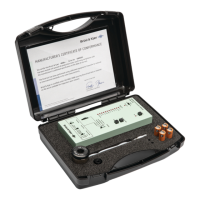
Do you have a question about the BRUEL & KJAER 4226 and is the answer not in the manual?
| Type | Pistonphone |
|---|---|
| Accuracy | ±0.2 dB |
| Frequency | 250 Hz |
| Sound Pressure Level | 114 dB ±0.2 dB re. 20 μPa |
| Microphone Diameter | 1 inch |
| Power Supply | Battery |
| Operating Temperature Range | −10 to +50 °C (14 to 122 °F) |
Explains symbols used in the manual for warnings and dangers.
Details risks from electrical, mechanical aspects, and warns against use in explosive environments.
Provides instructions on proper disposal of electronic equipment and batteries according to WEEE.
Introduces the purpose and capabilities of the acoustic calibrator.
Describes the calibrator as a precision instrument for lab/in-situ use and outlines general operational aspects.
Explains the internal block diagram and signal generation process of the Type 4226.
Details sensitivity calibration, frequency response, time weighting, crest factor, noise dose meter calibration, and AC output use.
Details connecting and using an external signal generator with the calibrator.
Lists the accessories supplied with the Type 4226 calibrator.
Explains the use of the matched coupler, microphone pair, and specific adapters.
Describes the power switch, low battery indicator, frequency settings, and their status LEDs.
Explains selecting test functions like Crest Factor, Time Weighting, Test Level, and Calibration.
Details setting microphone types, sound fields, sound levels, and timer function.
Details the side panel connectors for external generator/AC output and access to the battery compartment.
Specifies operating conditions and provides battery installation instructions.
Covers corrections, stabilization, and connecting coupler and adapter for calibration.
Guides frequency response calibration for listed and unlisted microphones.
Outlines checks for linearity, time weighting, crest factor, and calibrating noise dose meters.
Explains AC output use and procedures for external signal generators.
Provides guidelines for storing, handling, service, and repair of the instrument.
Specifies the need for recalibration by authorized personnel or recognized laboratories.
Lists detailed technical specifications for the Type 4226, including accuracy, levels, frequencies, and environmental conditions.
Lists the safety, EMC, and environmental standards that the Type 4226 complies with.
Explains automatic corrections for microphone responses and A-weighting when using the internal generator.
Details how to manually apply frequency response corrections when using an external generator.